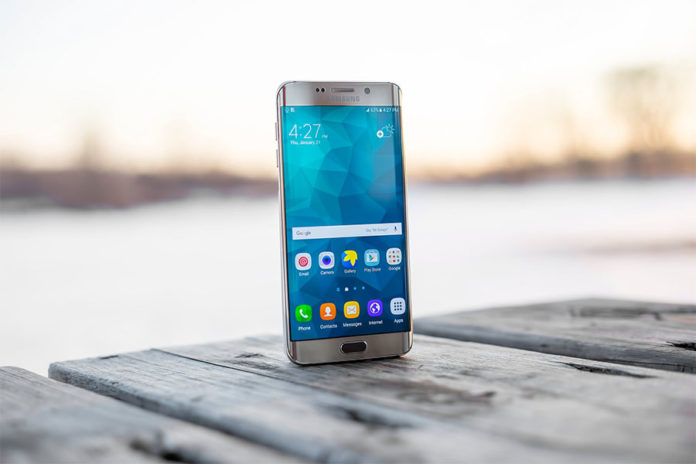By Jeanne Pinder
Mobile banking is exploding with new ideas from voice-first development, to putting humans back into the digital experience; to artificial intelligence and advanced biometrics. There’s even a growing trend for ATM withdrawals without your chip card—which would’ve sounded like a magician’s card trick just a generation ago.
We asked some smart people in financial services to tell us what they see coming and growing in the mobile realm in 2019. Here’s what they shared.
App-only ATM withdrawals
“The thing I’m most excited about is the ability to withdraw money at ATMs using only an app. That means no more getting stuck without cash if you don’t have your card on you or if it’s stolen. Some ATMs are using near-field communications technology and/or Apple Pay. Others could use a QR code or give you codes to punch in. Chase Bank, for example, is offering cardless, app-based ATM transactions at specific locations, working with Apple Pay, Google Pay and Samsung Pay.”
—Alex Matjanec, founder/CEO of AD-60.
Prominence and dominance in voice banking
“Many experts are convinced voice will be the dominant user experience in the next year or two. By 2020, 50 percent of all web searches will be voice generated. Companies must begin to support a voice-first approach or get left behind.
They also need to do more than just optimize for sound-driven search. Voice user interface [VUI] improves customer engagement, conversions and insights.
So the true challenge for the C-suite lies in finding where it makes the most sense for their business.”
—Ed Price, director of compliance at Devbridge Group.
Making mobile human
“Consumers want and need more than a digital-only experience from their banks. They need help navigating those moments when life and money meet. Umpqua recognized early on that human connection still matters, even as DIY digital banking tools continue to proliferate. Last year, we unveiled our Human Digital Banking Strategy—a vision for banking in the digital age that keeps people at the center of the customer experience and banking relationship. And this fall we launched the Umpqua Go-To app, our first Human Digital Banking platform. It gives every customer the choice of personal banker devoted to their financial needs regardless of account balance. We’re already seeing the power and possibilities of technology to create a more meaningful customer experience.”
—Rilla Delorier, executive vice president, chief strategy officer, Umpqua Bank.
Growth of biometric authentication
“As we continue to see a rise in data breaches, which are also advancing in sophistication, biometric technology is no longer simply a ‘nice to have’ for banks and financial institutions. Rather, it’s a ‘need to have.’ As a recent MasterCard study shows, users are prepared and willing to adapt biometrics as password replacements; they see it as a more secure, convenient process. With this, financial institutions worldwide are investing in mobile banking authentication for employees and customers alike in order to deliver a secure, friction-free log-in experience from anywhere.”
—James Stickland, CEO of Veridium.
Earlier identity verification
“Identity verification at the earliest point minimizes the potential for fraud and those banks that use global consortium data will have a significant edge. ‘Crowdsourced’ data enables financial institutions to track digital identity and monitor transactions across multiple entities and geographies. That gives them a more global view of the device and the person behind it. They can make better real-time decisions that help thwart fraudsters—but in a way that’s seamless to the legitimate customer.”
—Dan Barta, principal banking fraud consultant at SAS.
Using data to the customer’s advantage
“The most important technology in mobile banking is not the app itself but rather the AI and machine learning algorithms that should work behind the scenes.
“In a recent BAI Banking Outlook study, only 34 percent of banks indicate that they always use data in a way that better serves customers. Perhaps that is why, in the same report, 52 percent of millennials said they would switch banks for better mobile or digital capabilities. More urgently, the report showed that Net Promoter Scores (NPS) dropped by almost 14 percent for cross-sold customers. NPS should increase for these customers if the bank continuously analyzed customer transaction and journey data. It results in the delivery of relevant, personalized experiences that are memorable and valued by customers.”
—David M. Wallace, Global Financial Services Marketing Manager at SAS.
Concentrated apps, new payment methods
“When you look to the early adopter side of the trend curve, you see things such as advice-driven AI services to help with financial planning, new payment methods moving away from more traditional services we see today from cards, new forms of credit functionality, and enhancements to the basics. All these will build on great app experiences already in market. I also think we’ll see more convergence or partnerships to bring apps together, so maybe we won’t be need four or five apps, but rather one app with four or five services you can reach through it.”
—Mark Ranta, head of digital banking at ACI Worldwide.
Non-traditional banks will rival major FIs
Alex Matjanec: “We’re seeing customers sign up in droves for accounts with non-traditional banks. Chime just opened 2 million online checking accounts and they’re adding more customers monthly than Wells Fargo.
Companies such as MoneyLion are enabling microloans based on recurring money habits. Want your paycheck two days early? No problem.
Need a quick $500 loan? You can get it as long as your recent financial data shows you can pay it back. Overall, there will be more loan-factor ways to increase customers’ buying power.”
The advance of mobile-only banks
James Stickland: “We’ve begun to see the rise of mobile-only banks, which demonstrates just how much convenience drives the modern consumer. With institutions such as Amsterdam’s bunq making waves as one of the world’s first mobile-only banks … customers can easily sign up for accounts on the go, eliminating the paperwork and trip to the brick-and-mortar bank branch. And as biometric authentication is paired with mobile banking, financial institutions will extend a hand to the unbanked or underbanked, who may be unable to verify their identify through a credit history or permanent address.”
From mobile banking provider to major financial partner
Rilla Delorier: “Using technology to create more meaningful and deeper connections with customers will drive mobile banking strategies for years to come. Innovative digital solutions, data and analytics, and a customer-first approach will enable banks to build closer human connections and solve financial problems.”
David Wallace: “AI and machine learning, used in real-time customer experience and customer journey optimization applications, will boost customer engagement, loyalty, NPS and revenue. Customers will come to see their bank as a partner in their individual financial experiences, instead of just a mobile banking app provider that they can kick to the curb when a shinier app comes along.”






























